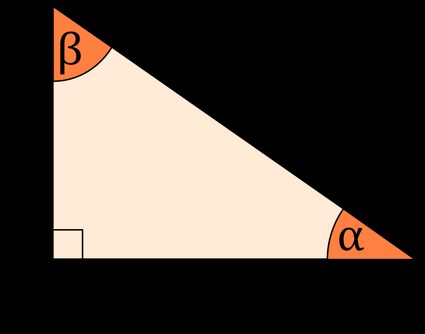Missing Side of a Right Triangle Calculator
The missing side of a right triangle calculator will help you find the third side or any third angle for a right-angled triangle.
A triangle is right-angled if one of the three angles is 90°, i.e., any two sides are perpendicular. In this calculator, we use this property to deliver a calculator that enables you to find the missing side of a right triangle. Read on to understand how to find the missing side of a right triangle.
Missing side of a right triangle
The formula that relates the sides of the triangle to its angles is the sine law. For a triangle having three sides as , , , and the angles , , and , it is given by the equation:
But we know that one of the angles is 90°. Therefore, the sum of the other two angles is 90°. Mathematically, if ,
Using the above relation, we get:
The above relationship, along with the Pythagoras theorem, forms the core of this tool and is used to calculate the missing sides or angles for any right-angled triangle.
Using the missing side of a right triangle calculator
Use the calculator to find the missing side of a right triangle having sides 9 and 12.
- Enter the length of the first side as
9. - Insert the length of the second side as
12. - The calculator will return the third side length as
15. - We can also get the angles for the triangle as
36.87°and53.13°using the missing side of a right triangle calculator.
How do I find the missing side of a right triangle?
To find the missing side of a triangle:
- Divide the length of the first side by the second side.
- Find the inverse tangent of the quotient to get the angle between the two sides.
- Divide the length of the first side by sine of the angle to obtain the third side of the triangle.
What is the third side of a triangle having sides, 3 and 4?
The third side of the triangle is 5. First, we find the angle between the two sides, i.e., arctan (3/4) = 36.87°. Then we divide the first side by the sine of angle obtained: 3/sin(36.87°) = 5.
